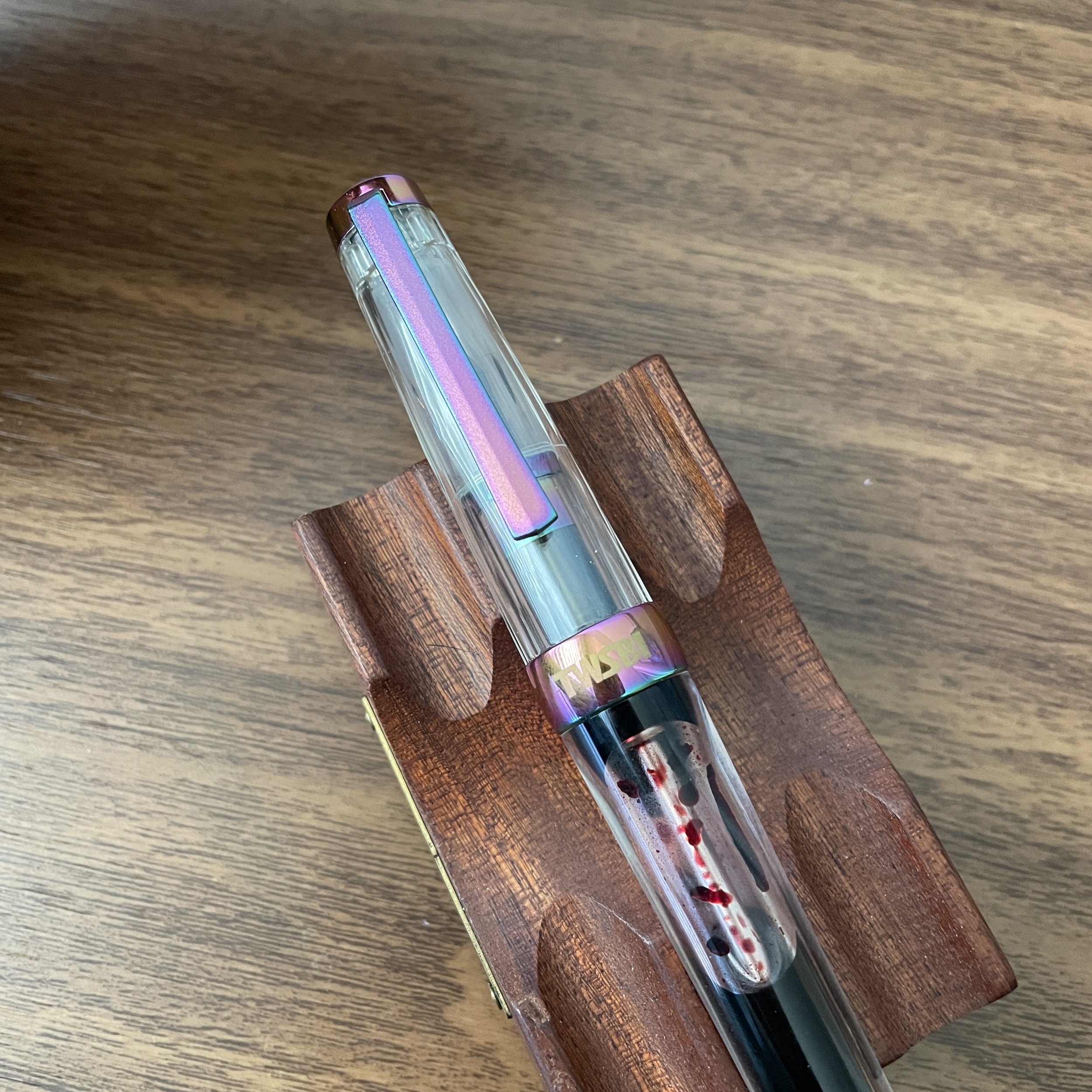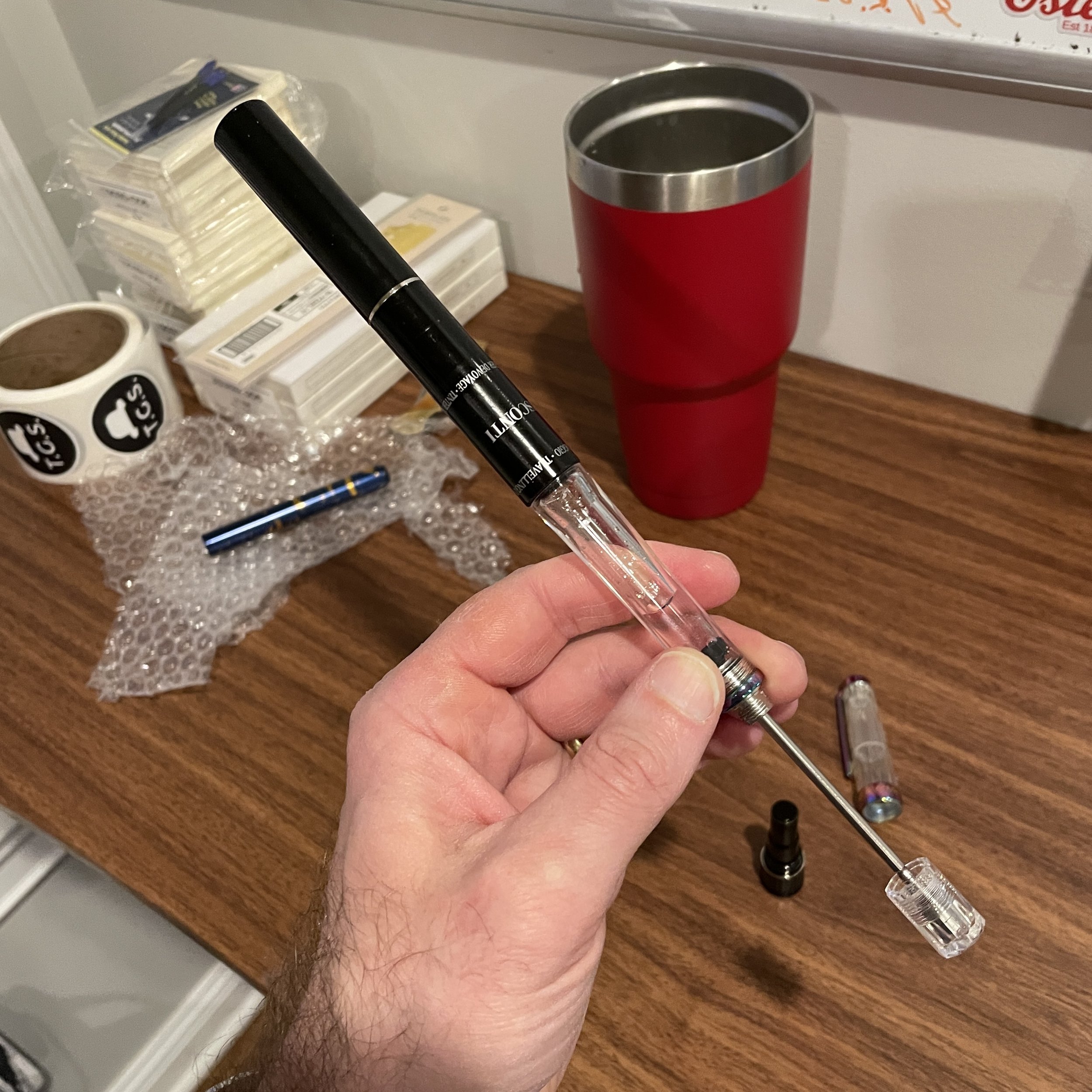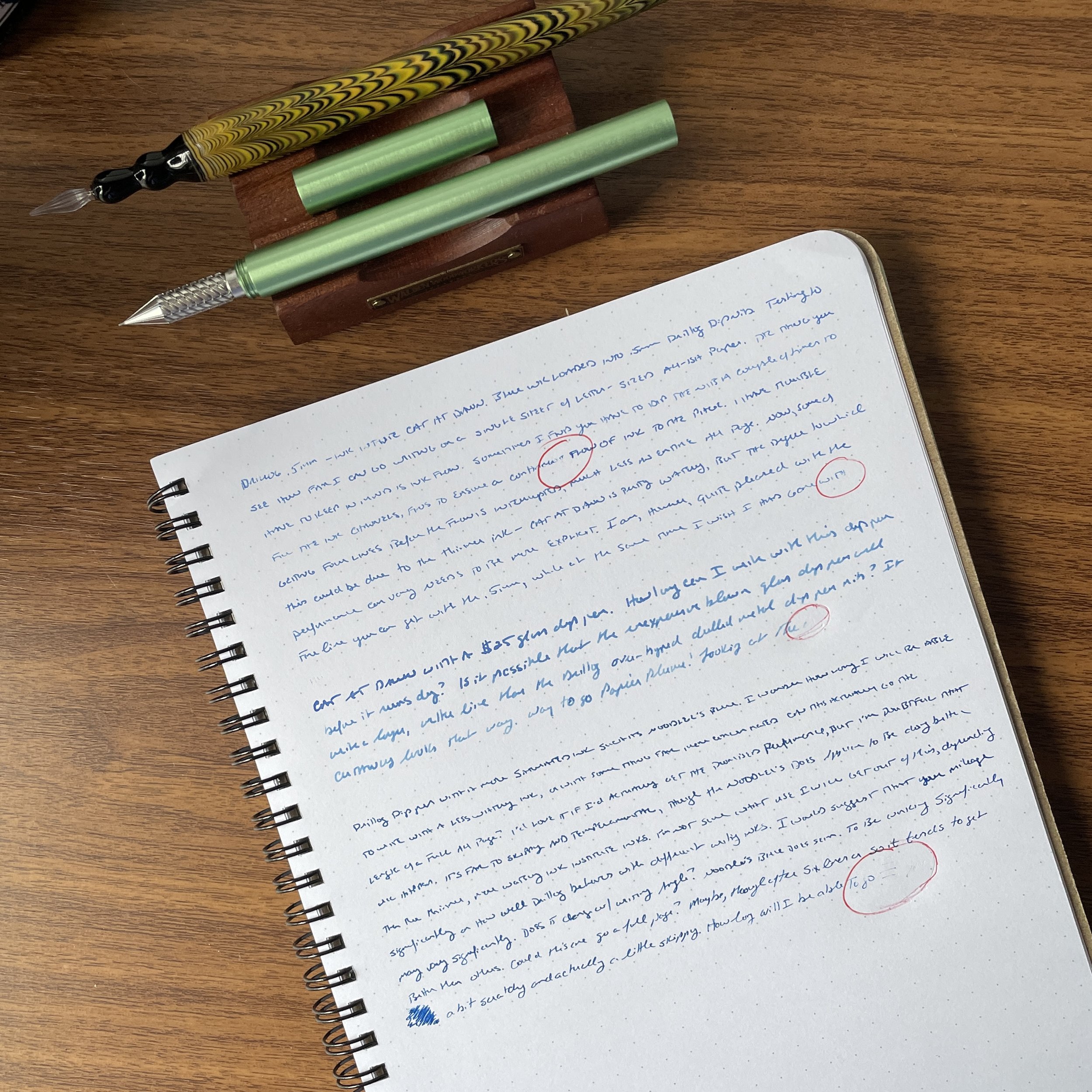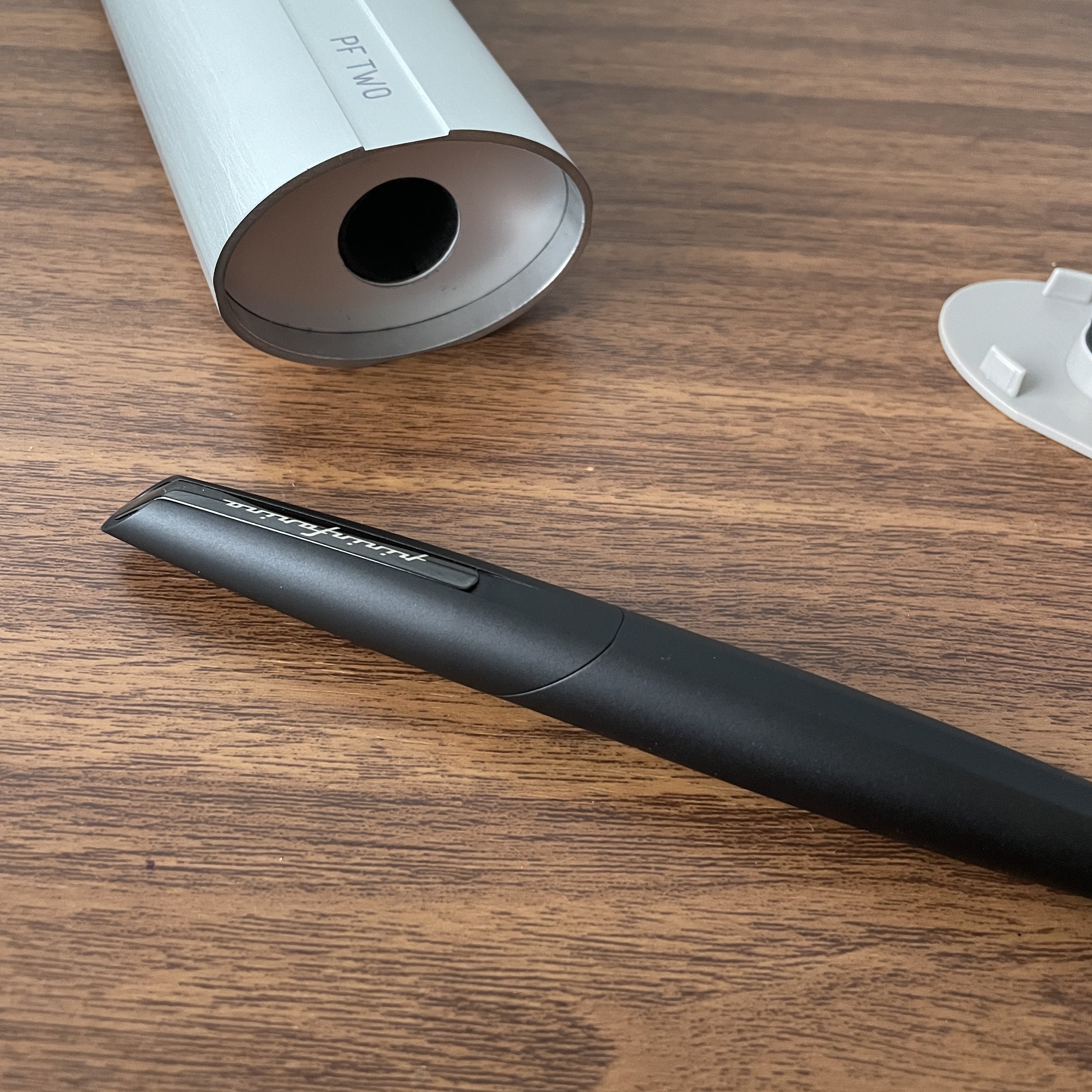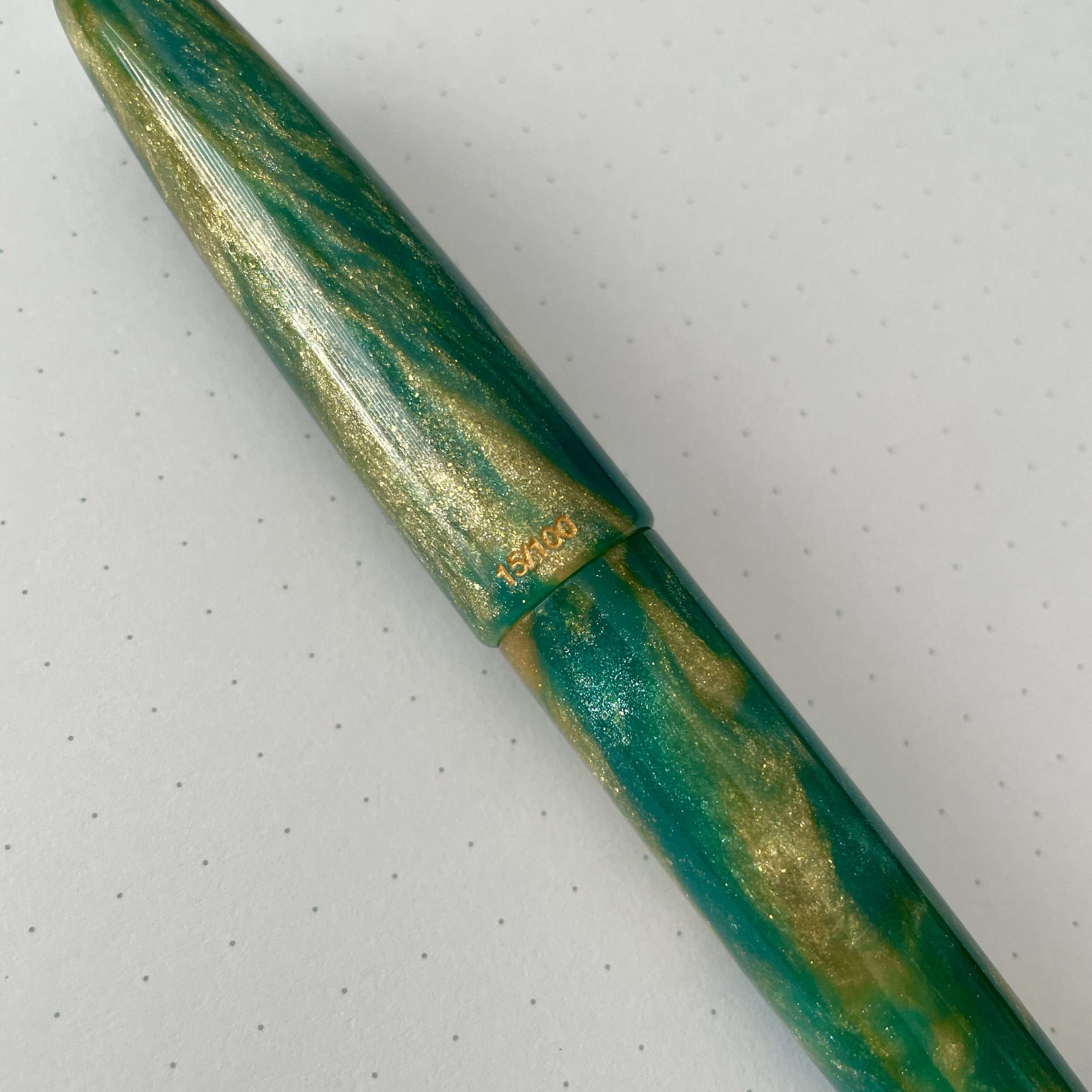Count me a fan of vacuum-filling fountain pens, from the luxurious Pilot Custom 823 to the inexpensive PenBBS 456, and now, the TWSBI Vac700R. The TWSBI Vac and I have had a somewhat tortured relationship over the years. While I’ve always loved the large ink capacity and convenience of the vacuum-filling system, the original Vac700 suffered from a design flaw involving the o-rings on the valve system, which had a tendency to inhibit ink flow and cause the pen to write extremely dry. I owned an original Vac700 fountain pen back in 2012/2013, when they were first released, but ultimately parted with the pen because I simply could not get it writing in a manner that I enjoyed. Fast-forward to a few years ago, when TWSBI announced the Vac700R, which incorporated a redesigned (hence the “R”) filling system that resolved the previous issues. Let me explain a bit further.
The Vac700R features a brushed trim, a faceted cap, and smooth barrel. (The “Iris” finish shown here is not standard.)
Vacuum-Filling Systems: Travel-Friendly Ink Tanks
A key attribute of vacuum-filling fountain pens is their ability to hold a large amount of ink while also incorporating a “shut off valve” similar to those found in Japanese-style eyedroppers like Opus 88 pens. This means that as long as you tighten the end cap, the filling system will seal off the ink supply from the nib, allowing you to carry this pen in your bag, on an airplane, or however you wish without any real risk of the ink burping or leaking into the nib.
You can see the shut-off valve at the top of the barrel right below the section. Unscrew the end cap (pictured below) to release more ink; tighten it back up when you’re done writing or need to travel.
Practically speaking, this means that when you write with a vacuum-filling fountain pen, you will eventually have to unscrew the valve at the back of the pen to allow additional ink to flow to the nib, as you do with the Pilot Custom 823 and Opus 88s. Following the redesign, I have experienced zero ink-flow issues with either the Vac700R or its smaller sibling, the TWSBI Vac Mini. My Vac700R sports a medium nib that’s a touch on the narrow side but is a fairly wet writer - just about perfect for me.
The end cap open in writing position. This also gives you a good idea of how much ink the pen holds (a lot).
What about filling the pen? Well, I would describe it as “easy with the possibility of getting a bit messy if you’re not careful.” To fill the pen, you first extend the plunger and retract the valve/seal all the way to the back of the barrel. Submerge the nib and section into your ink bottle of choice, and depress the plunger. The key to filling a pen like this mess-free is (1) waiting a few seconds for the pen to fill completely - very cool to watch; and (2) making sure your ink bottle isn’t overly full, as the pen will expel some air on the downstroke.
Note: If you want to fill your Vac700 or Vac700R with as much ink as possible, consider using a specially designed TWSBI Vac20A Ink Bottle. DO NOT USE A VISCONTI TRAVELING INKWELL, as the Vac700R doesn’t seal completely on this device and you will end up with a mess like the idiot shown here.
Design Functionality and Aesthetics of the Vac700R
Those who appreciate TWSBI’s overall aesthetic should enjoy the Vac700R. At one point, I steered away from the Vac700R towards the Vac Mini due to the latter’s ability to post, but since I’ve found myself expanding my repertoire to enjoy larger, “unpostable” fountain pens in recent years, I’ve also grown to appreciate the Vac700R’s design. The pen has a long, rounded section that’s comfortable to hold, as well as a good length and balance unposted. While you can technically post the Vac700R, in the sense that the cap will fit over the end cap (even when it’s open in “writing position”), posting makes the pen very long and, in my opinion, unwieldy.
This particular pen might have one of the nicest TWSBI medium nibs in my current collection.
Takeaways and Where to Buy
The TWSBI Vac700R is a great example of why the pen community loves TWSBI - they iterate on their designs in response to user feedback, constantly seeking to improve their pens in order to offer a better writing experience. Their ability to do this while keeping the price point below $100 continues to amaze me.
Nearly all TWSBI retailers stock the Vac700R, making it one of the easier vacuum-filler pens to find at retail. The pen sells for $65-$85, depending on finish and nib choice. The version shown here is the recently released Vac700R “Iris” finish, which incorporates this holograph-like anodized finish on the nib and metal trim. I have a small number of Vac700R Iris pens available for purchase in the T.G.S. Curated Shop, and as always would appreciate your support. (We also sell the TWSBI Vac Mini, which due to the same shut-off valve technology used in the Vac700R, makes a nice “pocket ink tank”.)
The T.G.S. Curated Shop is an authorized retailer of TWSBI and other brands we stock. By shopping with us directly, you are supporting original content, pen reviews, pen show events, etc. from The Gentleman Stationer. If you would like to support us even further, please consider checking out the T.G.S. Patreon Program, which offers access to online meetups, exclusive discounts and pre-orders, and more!
